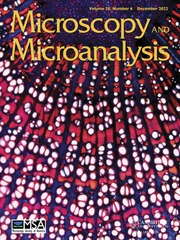No CrossRef data available.
Article contents
An SEM Investigation of Annealing Encapsulants for SiC
Published online by Cambridge University Press: 02 July 2020
Extract
Advancing technology continues to place greater and greater demands on semiconductor devices. It is clear that Si technology alone will not be able to meet all of these demands. Silicon Carbide (SiC) is a promising material for highpower and high-temperature applications, such as SiC devices for controlling power in a more electric vehicle in which the SiC device is cooled by the engine oil (200 C.) SiC is well suited for high-power/temperature applications due to its large bandgap of 3.03 eV (for 6H), high breakdown electric field of 2.4 x 106 V/cm (again for 6H), thermal stability, and chemical inertness. These properties hold the promise of reliable and robust performance, but the latter two also present challenges to fabricating such devices. For instance, a key part of making devices involves selected area doping. This is typically accomplished with ion implantation, because the rate of diffusion is so low, followed with an anneal to remove the implant damage and electrically activate the dopant.
- Type
- Semiconductors
- Information
- Microscopy and Microanalysis , Volume 6 , Issue S2: Proceedings: Microscopy & Microanalysis 2000, Microscopy Society of America 58th Annual Meeting, Microbeam Analysis Society 34th Annual Meeting, Microscopical Society of Canada/Societe de Microscopie de Canada 27th Annual Meeting, Philadelphia, Pennsylvania August 13-17, 2000 , August 2000 , pp. 1094 - 1095
- Copyright
- Copyright © Microscopy Society of America
References
1. Jones, K. A. et al., Journal of Material Science and Engineering, B61–B62(1999)281.Google Scholar
2. Seshadri, S. et al., Applied Physics Letters, 72(1998)2026.CrossRefGoogle Scholar


